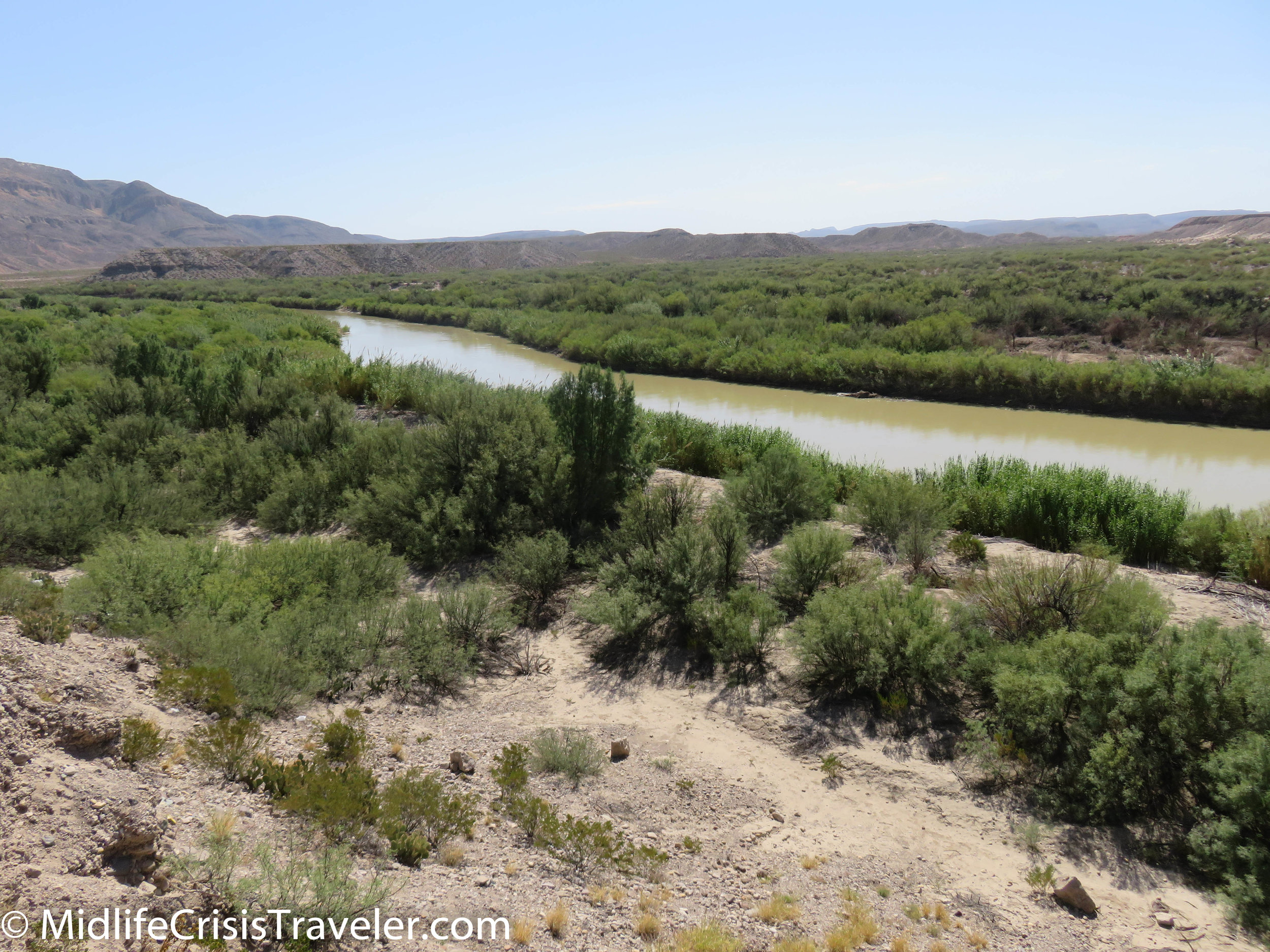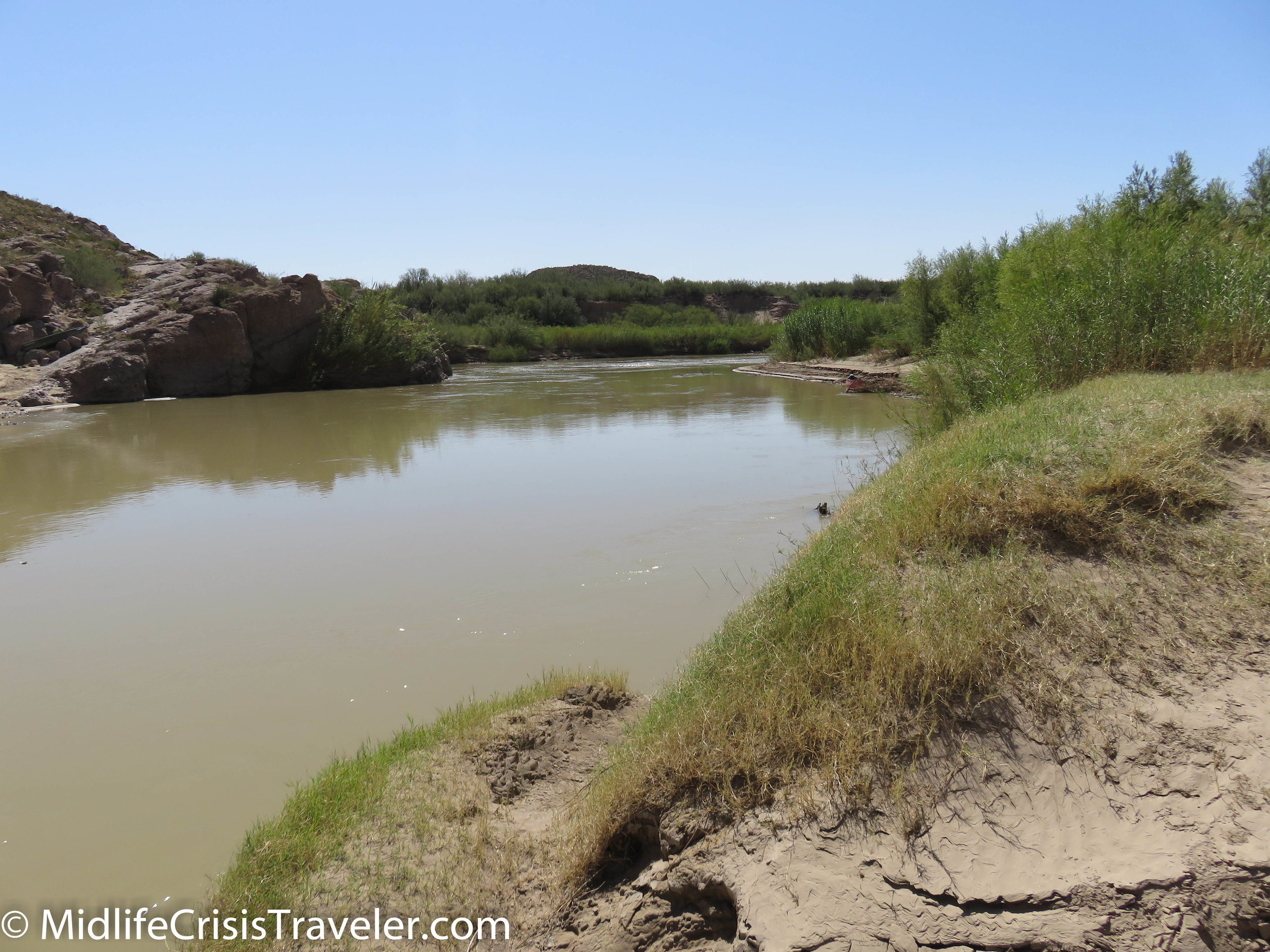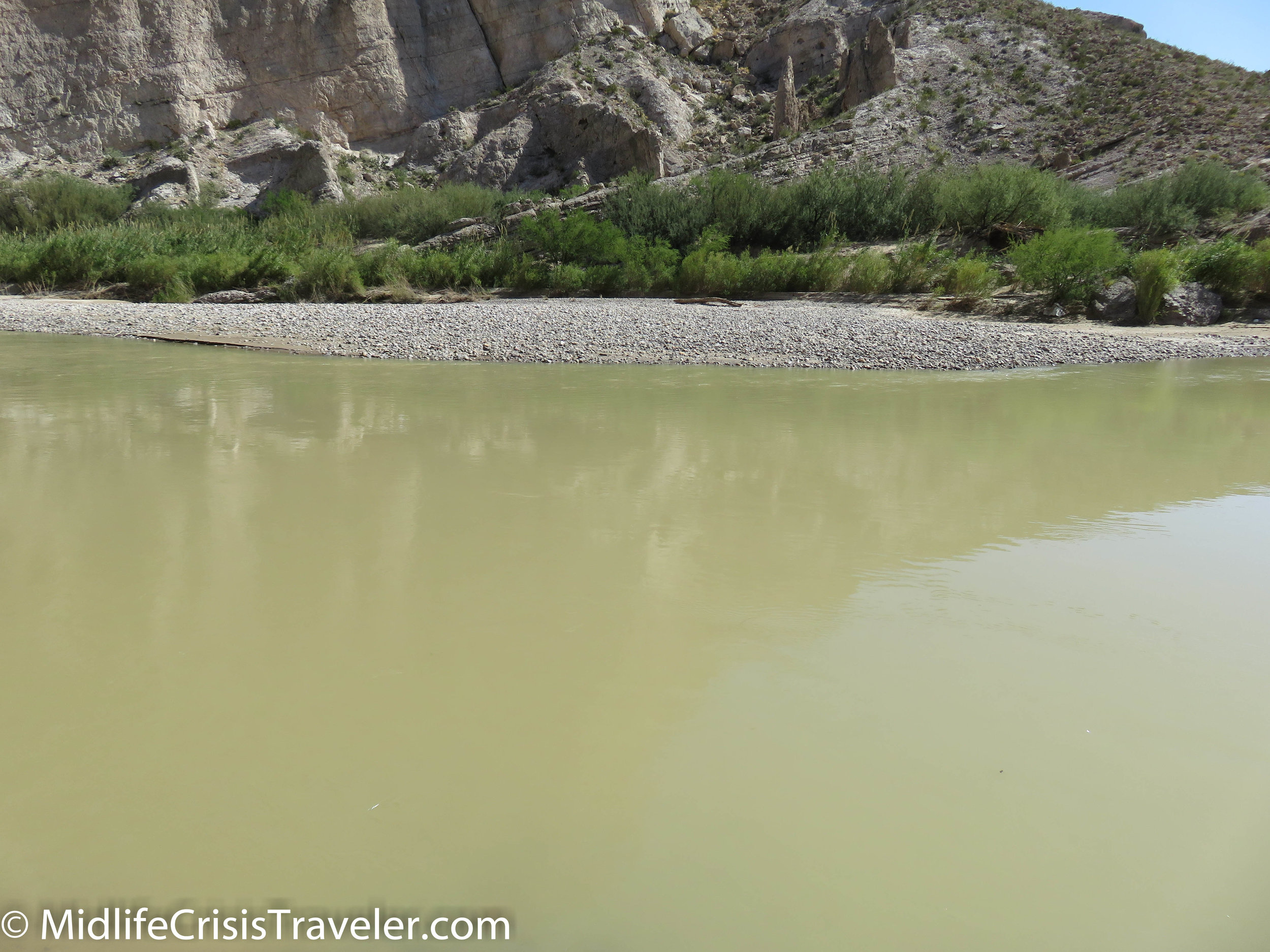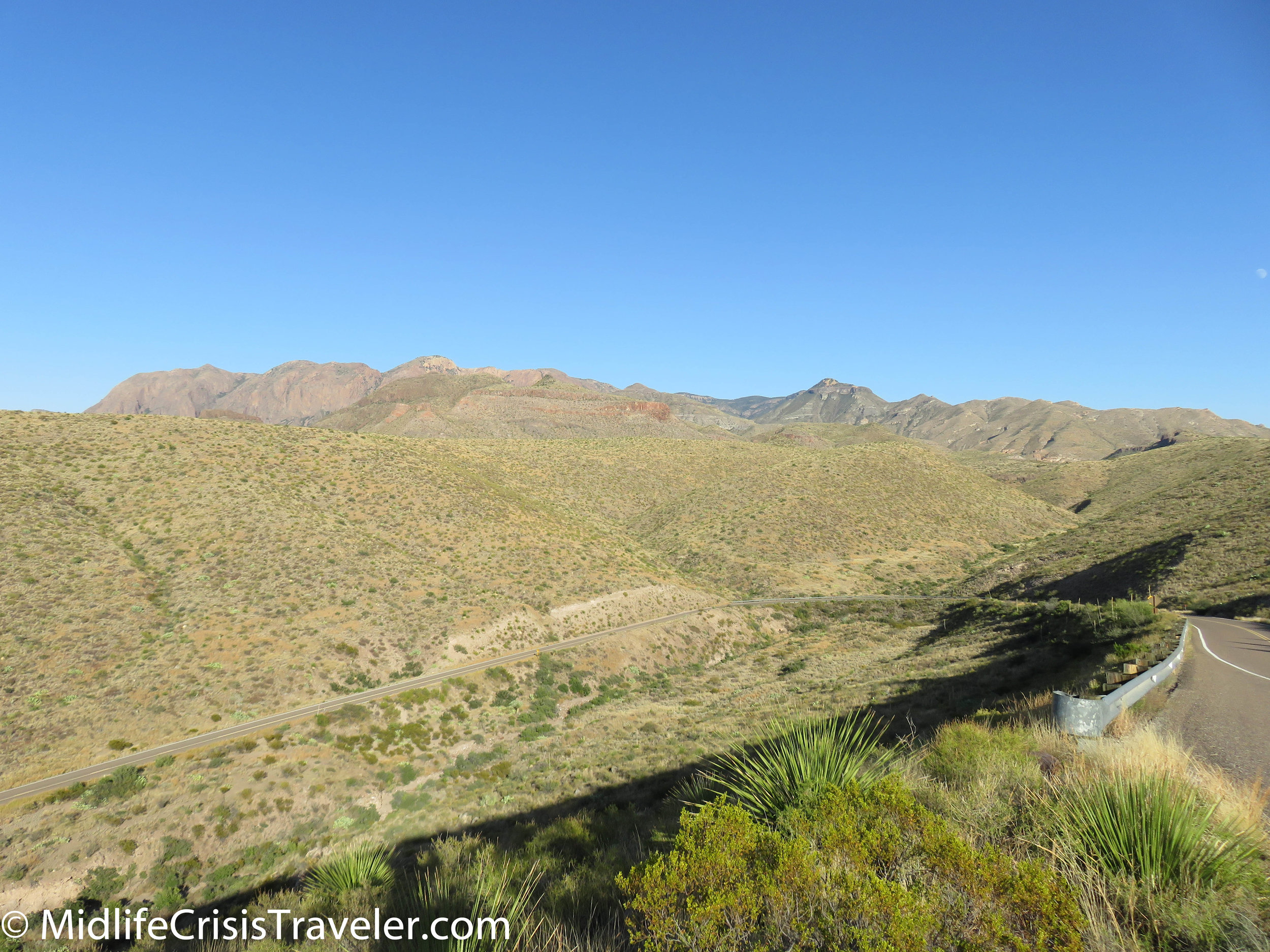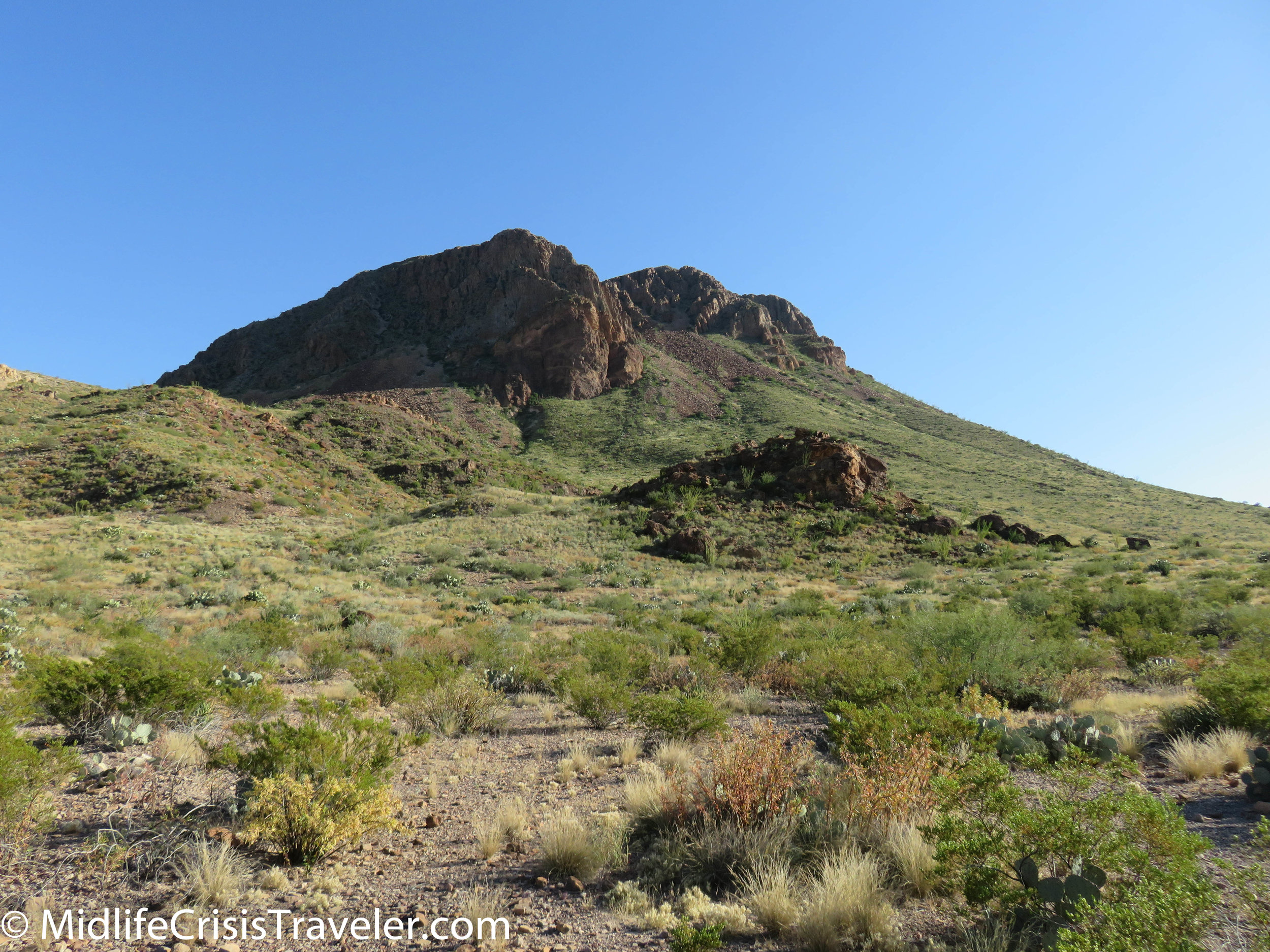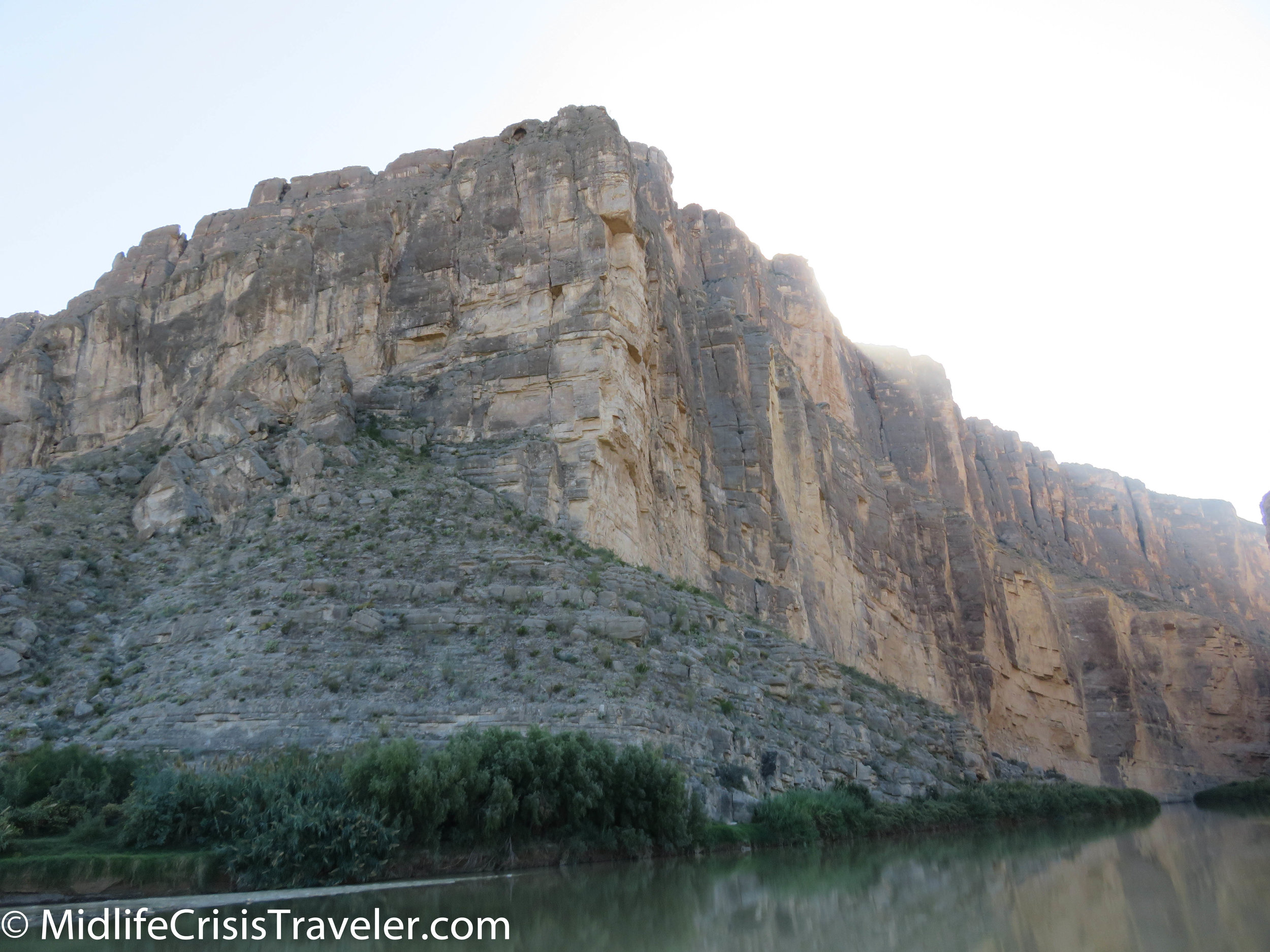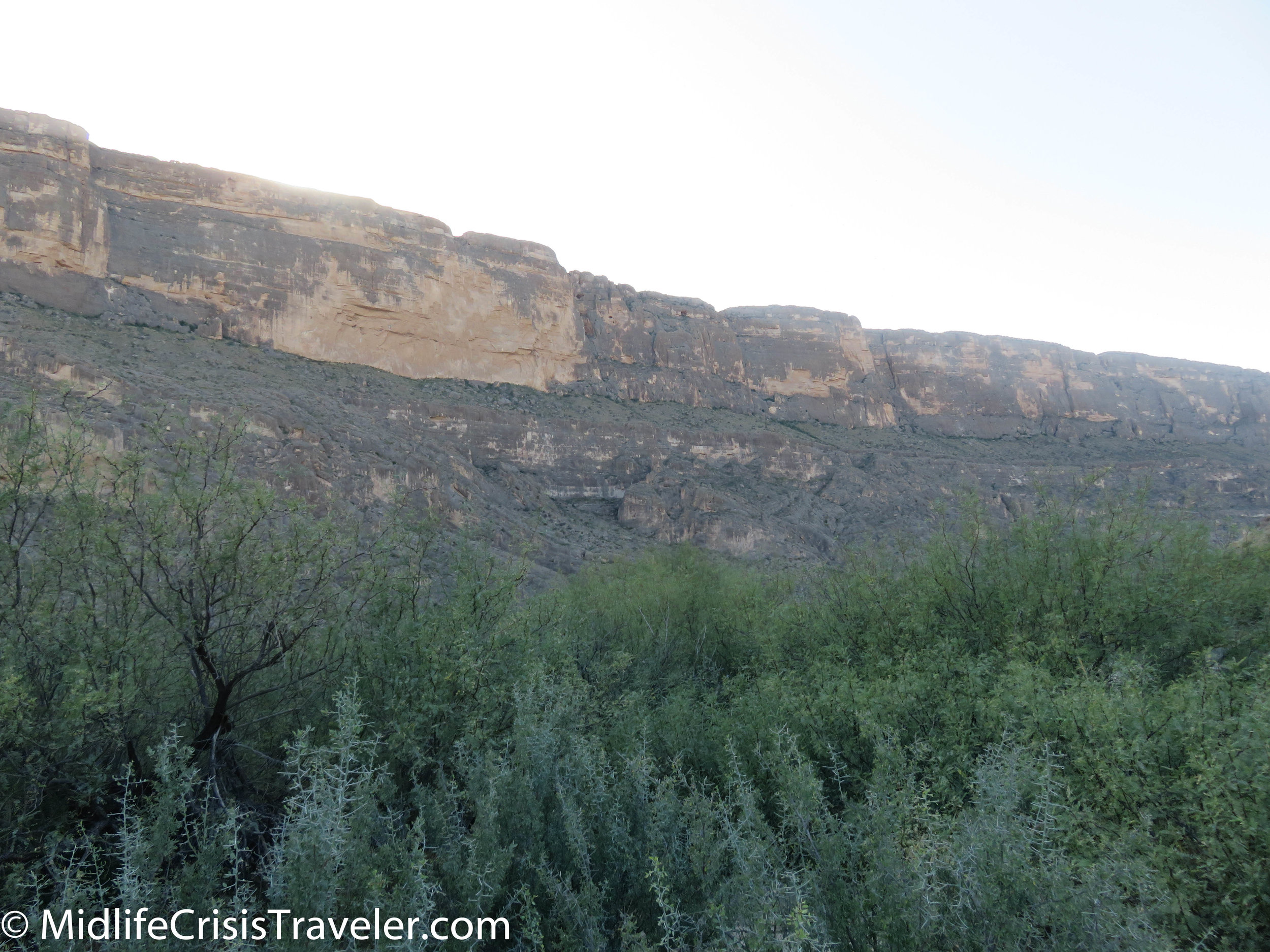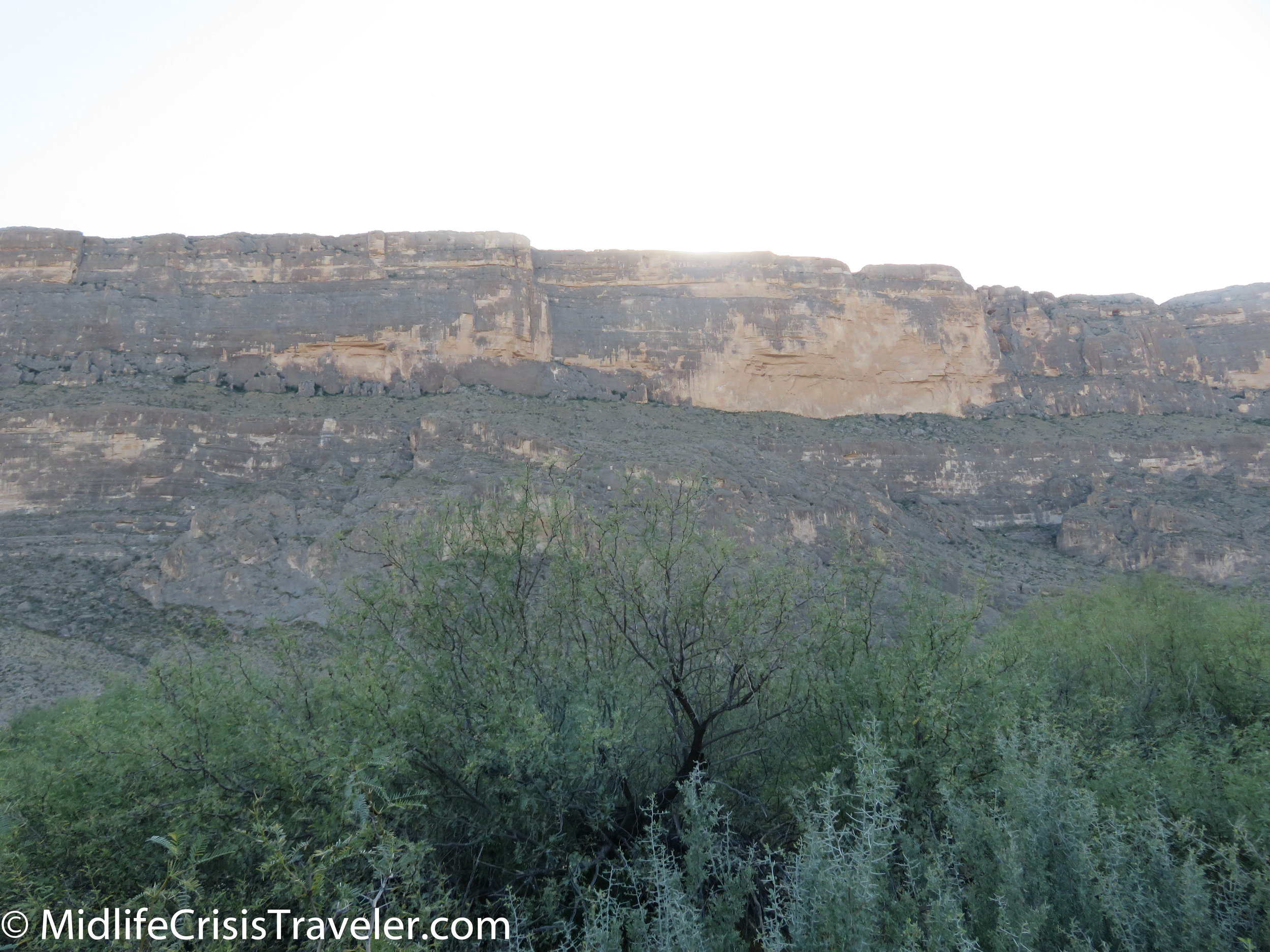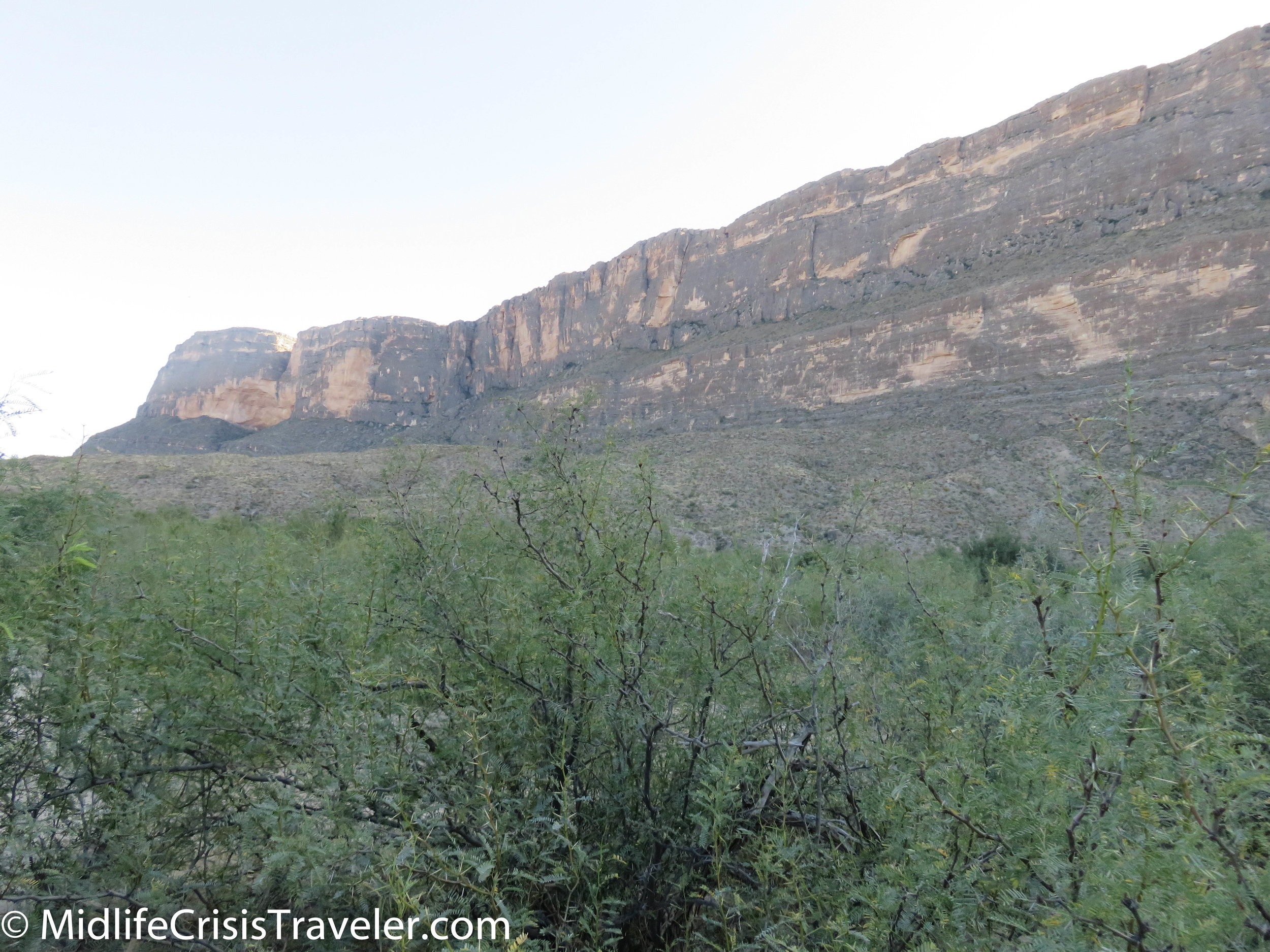Boquillas Canyon and Santa Elena Canyon are almost at opposite ends of Big Bend National Park. Boquillas is a dead end on the eastern arm of the park whereas Santa Elena is a dead end near the western tip of Big Bend. Both are very remote areas that share the Rio Grande River as their southern border. The surrounding landscape is equally as beautiful.
There are a dozen tributaries that feed the old Rio Grande. Generations have navigated its flow and used its water to farm the land. You can see the lush vegetation that thrives in the river basin. It is a shallow river that is lazy at times and swift at others.
Boquillas Canyon’s jagged walls have been carved by the water. You can either walk about 1.4 miles roundtrip on the trail along the river or take a 2-4 day rafting trip that will float you 33 miles down the canyon. Whichever adventure you choose, be sure to wear sunglasses as the steep limestone walls of the canyon reflect the bright sunlight like a mirror.
Rock formations on the road through Castolon have been shaped by volcanic eruptions occurring over millions of years. The volcanic remnants protrude through grass, cactus and desert shrubbery. The land is calm now, awaiting the next volcanic episode.
Santa Elena Canyon is a grand presentation of how water always wins. The miniscule waves of the Rio Grande seem to be laughing at the massive rock that has been cut in half by millions of years of water assault. The river no longer thrashes the limestone walls of the gorge, it is much more peaceful now. Crossing the 80 feet or so of the Rio Grande is a federal crime as the grasslands at the foot of the cliff is Mexican land. (Please no comments about immigration).
Have you visited Big Bend National Park? What was your experience like?



